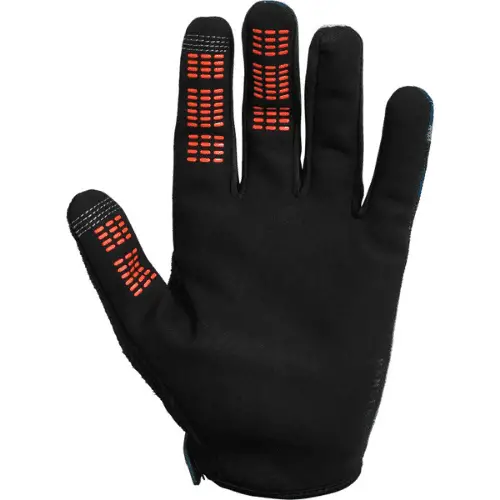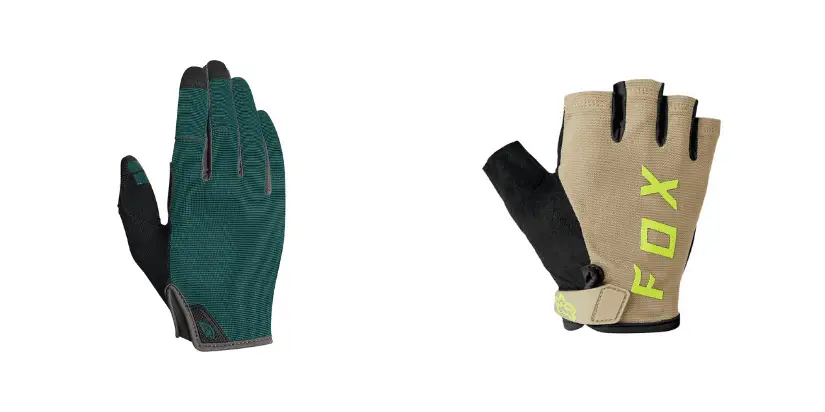If you look around the trails at other mountain bikers, chances are many of them are wearing gloves. But if you’ve never worn a pair of mountain bike gloves before, you might ask yourself, are they really necessary?
If you’re going to ride a mountain bike, you need to wear gloves. They protect your hands from getting cut up when you crash, help you hold onto the handlebars, and reduce the vibrations coming from the trail.
Ask any experienced mountain biker:
Chances are they’ll have a story about a time when they crashed not wearing gloves. Don’t worry. I’ll spare you my gruesome details.
But to expand on why you need to wear gloves, let’s look at how mountain bike gloves protect your hands.

How Mountain Bike Gloves Protect Your Hands
There’s no getting around it:
Mountain biking is a dangerous sport. Thankfully, mountain bike gear companies design gloves with protection in mind.
Gloves are an extra layer of protection between you and the dirt. They protect your hands from cuts, abrasions, and burns when you fall. This is thanks to the durable fabric they are made out of.
Mountain bike gloves are made out of:
- Ripstop
- Leather
- Neoprene
- Twill
But the protection doesn’t end there. Some gloves have knuckles and fingers reinforced with carbon fiber, D3o, or neoprene. This protects your hands from those overgrown trails and the times when you accidentally punch a tree.
Yet, it’s not all about protection:
Mountain biking is a sweaty physical sport, and gloves make it easier to grip the handlebars.
New to mountain biking? Wearing the right clothes will dramatically improve your experience. Learn exactly what you need to wear on your next ride in this post.
How Mountain Gloves Make it Easier to Grip the Handlebars

Half of mountain biking is learning how to hang onto the bike through rough sections of trail. Add in some rain, mud, and sweat, and it becomes very difficult to hold onto the handlebars.
Glove designers use special fabric on the main contact points to help you get a better grip on the handlebars.
Suede is used in the palms to ensure it’s easy to hold onto the grips.
Gel is added to the tips of the fingers and thumbs to increase your grip. The extra grip helps you hold onto the brake levers and shifter over rough terrain.
As a bonus, most of this gel is touch screen compatible.
But what about all those vibrations coming from the trail:
Gloves Help Reduce Vibrations
Mountain biking creates a lot of vibrations.
One study found that an enduro mountain bike ride can expose your arm and hands to 6.61ms-² of acceleration.
Which is well above the exposure limits for a single ride.
That’s why gloves are designed to help mute some of this vibration.
Just having some fabric between your hand and the handlebars starts to reduce some vibrations. Some gloves take it a step further and add gel and padding into the palm. This absorbs even more vibration.
Different Types of Mountain Biking Gloves
There are two types of mountain bike gloves: Full finger and short finger.

Full Finger
Full finger gloves cover your entire hand and offer the most protection. They commonly have added silicone or rubber on the fingers to enhance grip. Full finger gloves are the most common type of mountain bike glove. They are great for everything from trail riding to downhill racing.
Short Finger
Short finger gloves only cover your palm and fingers up to the first knuckle. These gloves do not offer as much protection. But, they have great ventilation and can feel less restricting. These gloves are commonly worn by road cyclists and cross country mountain bikers.
Summary
In short, you should wear gloves if you’re going mountain biking. They help protect your hands, enhance your grip, and reduce vibrations. While they may be cumbersome at first, you will get used to them, and they will become second nature.


